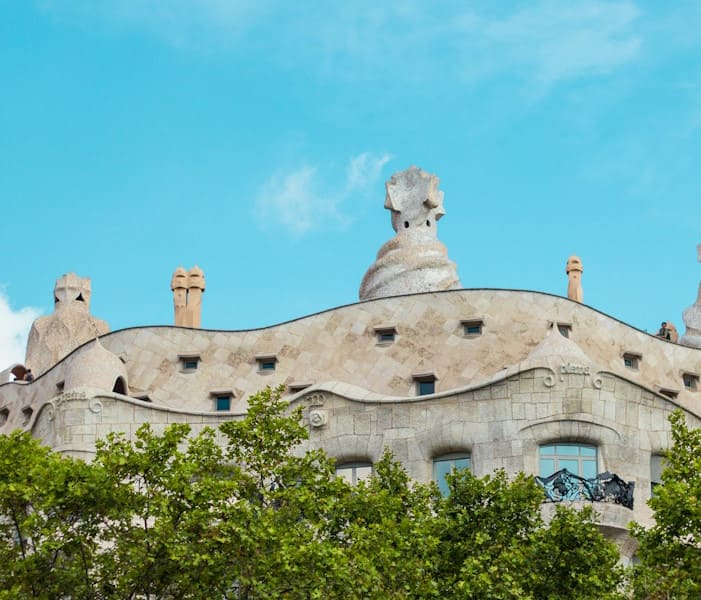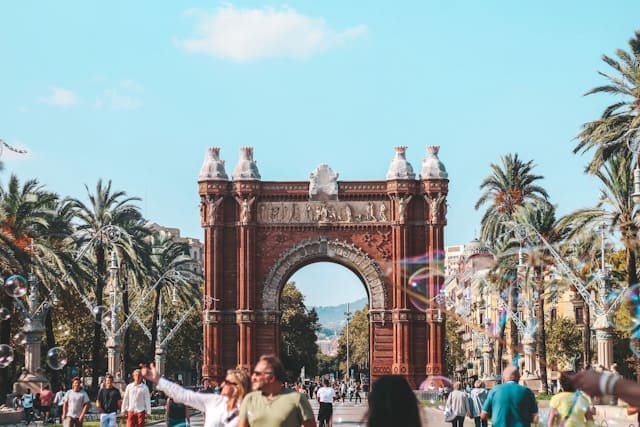
Translation agency: Catalan language
About the Catalan language
Origins
Catalan is an Indo-European language that stems from Latin, belonging to the Western Romance languages’ family, as the French or Portuguese, and is one of the seven most widely spoken Romance languages, with nine million speakers. It emerged between the 8th and 10th centuries in the territories of the Carolingian Empire that formed the counties of the Hispanic March and experienced significant expansion during the 12th and 13th centuries.
Geographical areas where it is spoken today
It’s a pluricentric language, as several codified standardized forms corresponding to different countries coexist It’s spoken in Catalonia, in the Valencian Community, in the Balearic Islands, Andorra, the Aragon Stripe, the city of L’Alguer (on the Sardinia island), Roussillon (in France), the Carche (Murcia), and in small communities around the world.
Dialectal varieties
The Catalan language is known by different names depending on where it is spoken, due to the large number of dialectal varieties encompassed under the terms “Catalan language” and “Valencian language”. “Catalan” is the most expanded glotonym and the official name of the language in Catalonia, the Balearic Islands (also known as Mallorcan, Menorcan and Ibizan, depending on the island) and Andorra; whereas in the Valencian Community the official name is Valencian (valencià), and in the Italian city of Alguero the official name is Alguerese Catalan.
Influence of other languages
Although the majority of the words in Catalan come from Latin, there are also historical borrowings from other languages, such as Germanic languages (from Gothic we have, among others, ganivet, that would be knife), and, more recently, from English (bar, web, revòlver…); from other Romance languages such as French (brioix, that would be brioche, garatge, that would be garage and fitxa, that would be a file card…), and Italian (piano, macarró, that would be macaroni, pantà, that would be swamp, pilot…); or even from Arabic (alcohol, sucre to sugar, alcova to sleeping compartment…) and the Basque ( esquerra, that means “left”, or estalviar, that means “to save up some money”).
An excluded and reclaimed language
History of Catalan: Repression and Recovery
After the defeat at Almansa (1707) and the invasion of Barcelona (1714) and Mallorca (1715), the Catalan speaking territories lost their own institutions, and the language was excluded from the legislation, and from the administration of justice and local government, of education, and notarial and commercial documentation.
Early 20th century
At the beginning of the 20th century, political Catalanism in Catalonia reclaim for the teaching of Catalan language and its use in the administration. That way, this language received significant institutional support with the creation of the Institut d’Estudis Catalans (1907), which was an academy for learning the Catalan language, the celebration of the First International Congress of the Catalan Language (1906) and the publication of the Catalan-Valencian-Balearic dictionary (1926-1962), a major work of Catalan lexicography. This support allowed for the institutionalization of the work carried out by the grammarian Pompeu Fabra between 1913 and 1930, which provided the language with a unified and modern set of rules.
Republican Constitution of 1931
The Republican Constitution of 1931 and the Statute of Autonomy of 1932 allowed Catalonia to get back the ‘Generalitat’ (the Catalan Government), declare Catalan language as an official language and implement an active policy to support its learning. This was not the case in the Balearic Islands and Valencian lands, which never saw their statutes of autonomy approved.
The dictatorship that followed the Spanish Civil War (1936-1939) and lasted until 1975 involved the systematic persecution of the Catalan language. Its use was once again forbidden in education, but also in the publishing of books, newspapers or magazines, and even in telegrams and phone calls; reaching the private scope. Movies, theatre, radio, television, and all administrative, notarial, judicial or commercial documentation were exclusively in Spanish, as were road and commercial signage, advertising…

Photo byRachel Moore on Unsplash
Despite all that, the Catalan language remained as a language of family transmission, both in Catalonia and the Balearic Islands, as well as in the rest of the Catalan speaking territories. In that time, significant works were written in this language; in some cases, from exile. Writers such as Josep Carner, Mercè Rodoreda, Josep Vicenç Foix, Salvador Espriu, Pere Calders and Joan Fuster were outlined.
Catalan in democracy
After the death of the dictator Franco (1975) and the arrival of democracy in Spain, the 1978 Constitution recognized linguistic diversity and established that Spanish languages other than Castilian Spanish could be official according to the autonomy statutes. The statutes of Catalonia (1979) and the Balearic Islands (1983) recognized Catalan as their own official language alongside with Castilian Spanish; as did the Valencian Community (1982), which legally called it Valencian. In parallel, the Constitution of Andorra (1993) established that Catalan is the official language of the state.
The Catalan language in the media and education
Under the protection of these statutes, the autonomous parliaments of Catalonia, the Balearic Islands, and the Valencian Community passed laws supporting the Catalan language to introduce it into schools, public administration and the media. This is the case, in Catalonia, with the Language Normalization Law of April 6, 1983, aimed at the recovering the knowledge and use of this language. It entailed an institutional commitment that materialized in organizations not only dedicated to promoting the Catalan language but also safeguarding the language. In addition, it became the common language in school in 1982. It also enjoys great visibility in the media thanks to television channels (currently more than 20), radio stations (over a hundred), and the written press (more than 30 printed and digital newspapers, as well as over 150 magazines) in this language.
Catalan in the digital world
The future prospects of this language are particularly evident in digital environments, where it enjoys a strong presence. Its positioning and level of use within information and communication technologies are noteworthy, as seen in the Viquipèdia (the Catalan version of Wikipedia), which already contains more than one million articles. The .cat domain (available since 2005 thanks to civil society mobilization) has continued to grow, and there are currently tens of thousands of websites using this domain.
Curious facts from yesterday and today
- In 1924, the police arrested the famous Catalan architect Antoni Gaudí for answering in Catalan, his mother tongue, and he was forced to pay a fine.
- On the social network X (previously known as Twitter), it is the 19th most used language.
- The first known verse translation of the Divine Comedy in Europe was in Catalan.
- In this language, there are 277 words that contain all five vowels at once: ouaire (a person who buys and sells eggs) is the shortest, and constructivament, the longest.
- The Catalan language had early access to the printing press, as evidenced by the fact that the first printed book in Catalan appeared in 1474.
- Catalan became, in 2024, the fifth language with 10,000 essential articles on Wikipedia.
- Tales of the White Knight (Tirant lo Blanch in its original title) is considered the first modern novel in Western literature and is a good example of the expansion of Catalan as a language of creation between the 13th and the 16th centuries.
- Catalan is the language with the most recorded hours in the Common Voice repository, a collaborative project that collects voice recordings in all the languages of the world.
- In the Catalan language, the three longest words are anticonstitucionalment, tetrabromofluorescència and tetraclorobenzequinona.
Why is translation to and from Catalan important?
- It is the twelfth most influential language in the world according to the barometer of the Ministry of Culture of France, ranking above languages such as Czech or even Mandarin Chinese.
- Translating from and to Catalan allows access to speakers from four states: Andorra, Spain, France and Italy. These are countries with a high human development and good Internet impact.
- Its the only official language of the Andorran state.
- It currently spans a territory of approximately 68,730 km2, inhabited by 13,740,000 people.
- The commitment of civil society to the language in the territories where Catalan is spoken has an important social dimension that should not be underestimated. For example, 69.9% of the population in Catalonia considers labelling in Catalan when buying a product to be ‘quite/very important’.
- Since 2023, this language can be used in interventions in the House of Commons.
Do you need a Catalan translator or sworn translations in Barcelona?
Do you need a sworn translation into Catalan for immigration, civil, legal or academic purposes? This translation must be done and certified by a sworn translator in Barcelona authorized by the Ministry of Foreign Affairs. The translator must also have extensive knowledge of specific legal and economic terminology and phrases.
If you need a sworn translation from another language to Catalan, or vice versa, you can rely on certified sworn translators. Our translation agency offers fast, top-quality services to meet your needs.


No Comments